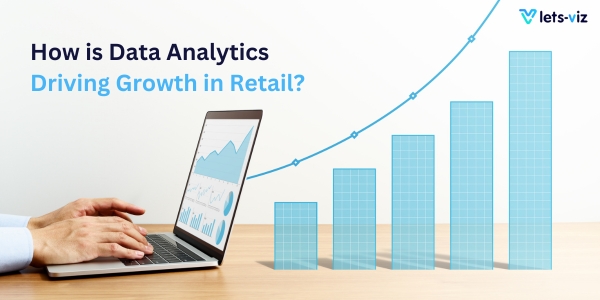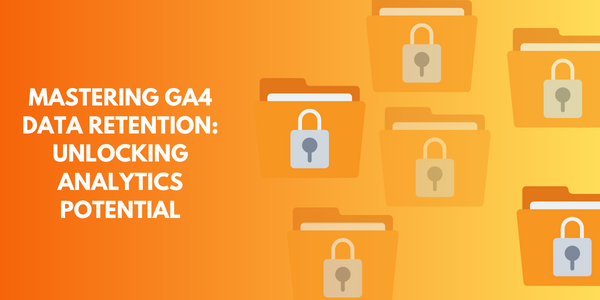Retail businesses are under pressure to speed up their efforts for digital transformation and adopt cutting-edge business models due to the seismic changes the retail industry has undergone in the last ten years. In order for retail businesses to stay competitive in a volatile market, data analytics, with its capacity to provide actionable, future-focused insights, has become an essential tool in their toolbox.
Retailers can now more clearly decide on important business decisions like promotion, supply chain, and pricing with the help of data analytics services. It makes sense that analytics would be in higher demand in retail. We will examine 6 ways in which data analytics is influencing the retail sector and assisting retailers in seizing growth opportunities in this blog post.
6 ways in which data analytics is Shaping the retail industry
1. Gain Comprehensive Customer Insights

Take into account all the customer-related data that retailers collect from their regular interactions, including their purchase history, demographics, and level of loyalty. This data must be enriched from both internal and external sources to produce detailed customer insights that guide revenue-optimizing decisions. In order to obtain comprehensive, actionable customer insights, these data sets must also be integrated and analyzed. The role of data analytics services in this situation is thus emphasized.
Retailers are assisted in meeting these needs by analytics software with advanced machine learning capabilities. In addition to basic customer information, these tools enable retailers to access a number of pertinent statistics, such as information about the mobility of smartphone shoppers and the online behaviour and buying patterns of their customers. These information sources can be combined and put through various processing steps to produce detailed customer insights and forecast prospective purchasing patterns.
2. Optimise Merchandising Across Channels
Before, only brick-and-mortar stores could engage in merchandising. Ensuring consistency across all customer touchpoints, especially with the growth of e-commerce and mobile shopping, is essential. This can be accomplished by combining various consumer-facing channels and developing an efficient omnichannel strategy that is integrated with the company’s business strategy. Retailers can accomplish this with the help of cutting-edge data analytics services.
By combining data from all customer touchpoints, retail players can create a comprehensive strategy that melds the needs of the offline and online worlds. Response to constantly shifting customer demands enables retailers to remain adaptable and flexible.
The processes involved in marketing, production, and supply can also be seen from above by retail businesses thanks to analytics. With the help of this information, they can improve assortment planning, pricing, and promotion techniques, as well as supply chains, and they can anticipate trends before they happen.
3. Implement Effective Pricing Strategies

The pricing policies of a company can make or break it. Even a small error in calculation can have disastrous consequences, as pricing decisions can significantly increase revenue.
Retailers must consider a number of factors when determining pricing strategies, such as demand, seasonal sales, inventory levels, and competitor pricing. Along with cross-channel pricing, dynamic pricing strategies, and customized offers, these businesses must also manage them. Retailers can integrate these variables with the aid of data analytics consulting services to develop predictive pricing strategies that are accurate scientifically and that can be used on a variety of platforms.
Dynamic pricing techniques are used by e-commerce businesses in an effort to outperform the competition and increase profits. To ascertain the highest price consumers will pay for a specific product, businesses use predictive analytics tools that examine pricing from competitors, seasonality, market trends, and a number of other factors. All in all, analytics is allowing retailers to put into place efficient pricing models that draw clients and increase profit margins.
4. Streamline Supply Chains
For profitable retail operations, a reliable supply chain is essential. Retailers must match their supply and distribution to the demand of their customers to accomplish this. Optimising supply and demand planning can benefit greatly from predictive analytics. Predictive modelling and scenario planning techniques can be used to forecast demand using AI-ML algorithms that analyze patterns in sales, customer preferences, and shipment data.
Retailers can improve inventory management and understand demand-supply dynamics by accurately predicting demand. They can decrease their inventory of in-demand items while preventing stock outs of high-demand items. Additionally, retailers can predict changes in the market and how peak demand periods, such as the holiday season, may affect consumer choices thanks to predictive analytics. They can adjust supply and distribution in this way to increase profits in these situations.
The manufacturing level can also be significantly impacted by demand forecasting that is powered by analytics. Businesses can reduce excess production and waste by correctly predicting the needs for different distribution channels. This is a win-win situation because it reduces costs while also assisting a company’s sustainability efforts.
5. Personalised Shopping Experience

Modern shoppers want tailored shopping experiences that satisfy their particular needs and preferences. Personalised experiences are more likely to draw and keep customers for brands. Retailers must come up with plans to curate shopper experiences and offer individualised recommendations at scale if they want to profit from this trend. And here is where data analytics consulting services are crucial.
Large amounts of data, including product stock levels, customer browsing habits, transactional history, and previous behavior, are processed by machine learning-based analytical solutions to produce tailored offerings for each customer. These could take the form of product recommendations, price cuts, or loyalty schemes. Such a strategy fosters customer engagement and expands opportunities for upselling and cross-selling.
6. Minimise Customer Churn
In this era of intense competition, building customer loyalty is one of any retail company’s top priorities. This is due to the fact that acquiring a new customer costs more than six times what keeping an existing one does. Customers frequently start looking for alternatives when they don’t receive the exact experience they were hoping for from a brand. Retailers can modify their offerings and avoid such situations by using big data analytics to gain insights into the elements that contribute to customer churn.
An online retailer, for instance, can use the insights gained from analysing customer data from a monthly subscription to draw in and keep subscribers who are more likely to become devoted customers. As a result, the retailer would be able to raise the lifetime value of a customer and see a significant decrease in the churn rate. They would be able to reduce the high marketing costs associated with bringing in new clients as a result.
Conclusion
The retail sector faces issues like data privacy and a lack of security. The inability of the companies to implement the insights learned from analytics into their business as well as the lack of a skilled team to interpret data are other problems. However, data analytics can help in business to increasing customer loyalty and boosting their brand image by delivering customer satisfaction with the right skills and accurate inference from retailers. Data analytics can be safely inferred to remain a crucial component of the retail industry as technology takes centre stage.
As more businesses use it to enhance operational effectiveness and business strategies, the use of data analytics in retail is anticipated to rise. Naturally, retailers who heavily invest in data analytics consulting services will be better positioned to stay ahead of the curve, increase profitability, and provide customers with a customised experience.
Success in the retail sector today depends heavily on using sophisticated retail analytics, metrics, and robust KPIs to support and make critical business decisions that are centred on the needs of the customer.








